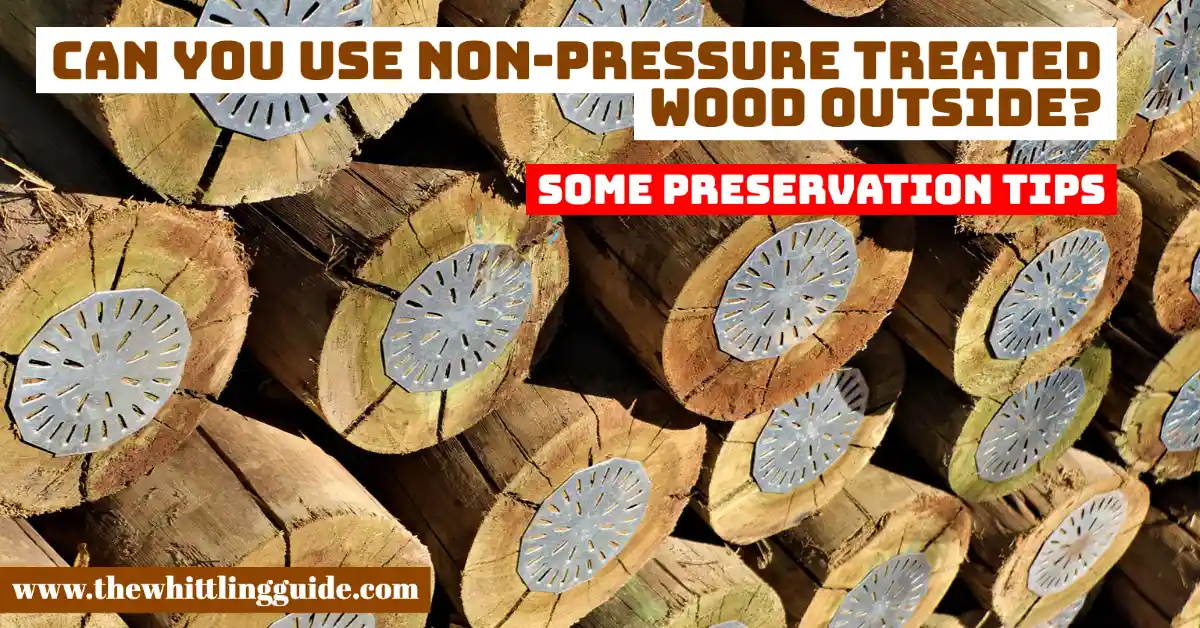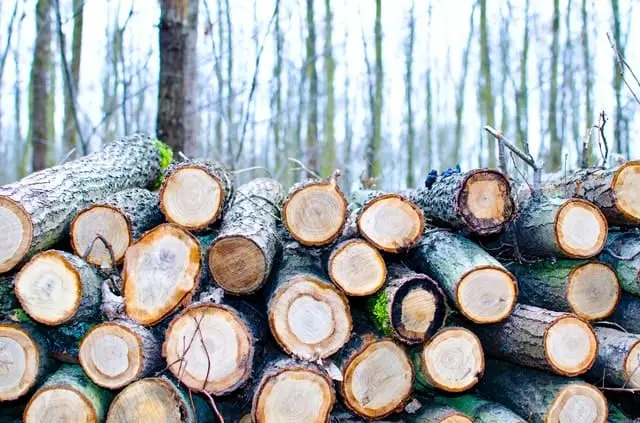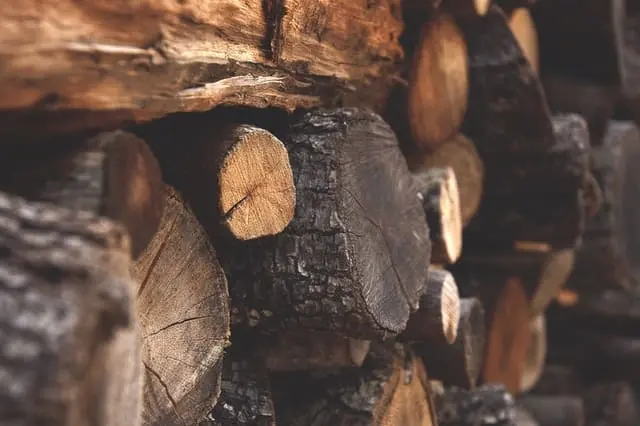
By and large, yes! If you use a wood preservative, ensure it is approved as a wood preservative. While tannins can be a problem using untreated wood, a wood preservative will help soak up the tannins in the wood. You can use non-pressure-treated wood outdoors as long as it is not composite decking or fencing. Pressure-treated wood has been impregnated with chemicals to prevent bugs from eating into the wood. Wood that is not pressure treated will not last as long in the sun. Let us look at how you can make the most of your non-pressure treated timber outdoors.

Using non pressure treated wood outside
You can use non-pressure treated wood outside but under certain conditions. It has to have a treated surface. Protective measures are taken so that the wood will not be affected by moisture and insects. The solutions you will give non-pressure treated wood should make it durable.
Be careful of devaluing your surface by using non-pressure treated wood outside. Amongst the substitutes for non-pressure treated wood are outdoor wood sealers, stains, and paints. These give protection to your wood when used outside. Using wood stains with UV light blockers contains the color of the wood material. You can use non-pressure treated wood outside when you have no option, but it does not last long.
You cannot use non-pressure treated wood outside
If you fail to structure the needed protection, you will have problems. The damages attract extra costs that are not ideal for low-budget users.
Non-pressure treated wood is prone to damage when exposed to sunlight. The sunlight produces ultraviolet rays. These rays drain the oils that make up the wood. Elimination of wood oils leads to loss of color in the wood material. It fades away with time.
How to tell the difference between non-pressure treated wood and pressure-treated wood?
The wood contains a green or brown color that it got during treatment. Although it is hard to differentiate between treated and non-pressure treated wood, pay attention to the green tint. Pressure-treated wood indicates the chemical used in the treatment process. Treated wood contains oily chemicals or smelly chemicals. A natural scent comes from untreated wood.
Non-pressure treated wood can rot.
What exposes non-pressure treated wood rot is water. To avoid water getting inside the wood, use an outdoor wood sealer. The outdoor wood sealer comes in multiple forms. These include Ready seal and natural cedar exterior stain.

To avoid rotting, use Tung oil to form a protective finish on the surface of the wood. Other options include using varnish, polyurethane, and semi-transparent deck stains. The listed items make the wood waterproof.
Pressure-treated wood is poisonous.
Pressure-treated wood is poisonous when exposed to fire. It contains substances such as arsenic that are dangerous to your health. Do not burn pressure-treated wood. When you burn the wood, cellulose burns off, and the heavy material remains in the ashes. They contain more concentrated forms. Even without cellulose, they remain toxic.
When you remain with ashes from the burnt pressure-treated wood, they contain toxic raw materials. When you want to get rid of pressure-treated lumber, bury the wood. That keeps you out of danger. Wood containing a greenish tint is with CCA. Refer to the wood safety concerns by the protection agency.
There is ACQ-treated lumber that seeks to deal away with the dangers of wood containing arsenic. However, the lumber has copper that leads to corrosion. It irritates the nose, eyes, and skin. As much as you try to eliminate arsenic wood, introducing copper wood brings other dangers.
I recommend the use of a face mask and washing hands. You should not burn Pressure-treated wood under all circumstances. Both fumes and ashes are toxic. The question remains: should we get rid of burning pressure-treated wood? Professionals should do the burning. They know what contains toxic substances between the smoke and the ash.
If it is the ash, they know how to dispose of it. They know what to wear if it is the smoke to protect them. You can have protective clothing to protect yourself from fumes, but you still have to get rid of the ashes. I do not encourage you to use pressure-treated wood to make food preparation surfaces. That does not include picnic tables since you serve food on the table, but you do not prepare the food on the same table.
Wood is not only poisonous to human beings but to animals and plants. Due to the toxic substances that come with pressure-treated wood, wear gloves, long-sleeved clothes, and a dust mask. You also have to keep away the wood from animal storage bins and compost bins.
Washing your hands is a must before eating food. Wash the clothes that you were wearing using the wood before reuse. The sawdust from pressure-treated wood irritates the nose, skin, and eyes. Please dispose of the sawdust before it affects you.
I advise you to use a disposable plastic tarp under your saw. That is useful in areas that are difficult to reach. However, there are exceptions if you have someone to inspect your wood. Leave the pressure-treated wood for outdoor activities so that you stay safe.
Things to consider before using non-pressure treated wood
Safety
Non-pressure treated wood can be poisonous. It is not only poisonous when burnt but also when exposed to food. You cannot use it in a place far from the fire. The chemicals used are dangerous when combined with heat. Smoke contributes to health-related diseases. Using wood on surfaces used when preparing food is dangerous.
Life expectancy
Since the wood is non-pressure treated, it has to be on surfaces without traffic. Using them on surfaces exposed to wear, like wood floors, is not practical. The wood will not last. It starts wearing off quickly.
When to use it?
Non-pressure-treated wood has to be on surfaces not associated with food. I encourage you to use it for gardening. However, some chemicals used to treat the wood are dangerous to the animals and the soil. That is why I advise you to know when it is proper to use wood.
Where to use it?
Non-pressure treated wood is not used anywhere. It has surfaces it suits and surfaces it does not. That prevents extra costs you were unaware of before choosing that type of wood. You need to check with experts if you are not sure.
How to use it?
There are chemicals to be applied to the wood for increased life. These substances include water-repellent preservatives and paint. The use of wood without adding chemicals weakens it.
How to protect non pressure treated wood
You can protect non pressure treated wood by following these tips:
- Use a waterproof sealant: This will help to keep the water out and prevent the wood from warping or rotting.
- Use a weather-resistant finish: This will help to protect the wood from UV rays and other weather damage.
- Use a protective cover: This will help to keep the wood clean and dry and prevent it from being damaged by insects or animals.
- Store the wood in a cool, dry place: This will help to prevent the wood from warping or rotting.
How to seal non pressure treated wood
To seal non pressure treated wood, you will need:
A sealant will help keep the water out and prevent the wood from warping or rotting.
A brush: This will help to apply the sealant evenly.
- Clean the wood: Use a brush or cloth to remove any dirt, dust, or debris from the surface of the wood.
- Apply the sealant: Use a brush to apply a thin layer of sealant to the wood.
- Allow the sealant to dry: This may take several hours or even days.
- Apply a second coat: Once the first coat has dried, apply a second coat of sealant to the wood. This will help to ensure that the wood is properly protected.
- Allow the sealant to dry: This may take several hours or even days.
Conclusion
If you follow these tips, you can help preserve your pressure-treated wood and keep it looking great. Cover your wood with a tarp or Trusted house wrap to protect it when it is not used. To keep moisture from seeping into the wood, apply a water-repellent sealer. Protect your wood further by painting or sealing it.
- Grain and Sheen: Teak Oil versus Danish Oil Uncovered - January 10, 2024
- The Cherry on Top: Crafting the Perfect Cutting Board - January 9, 2024
- Polyurethane Water-Based vs Oil-Based: Choosing the Right Finish - January 8, 2024
